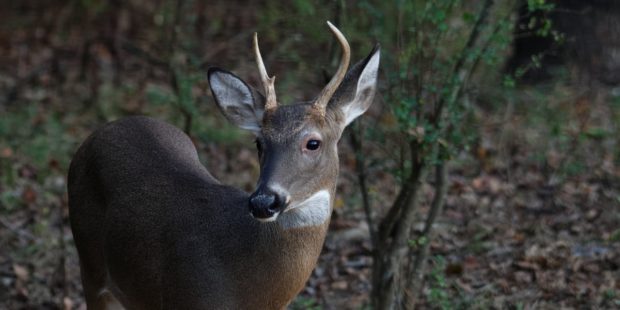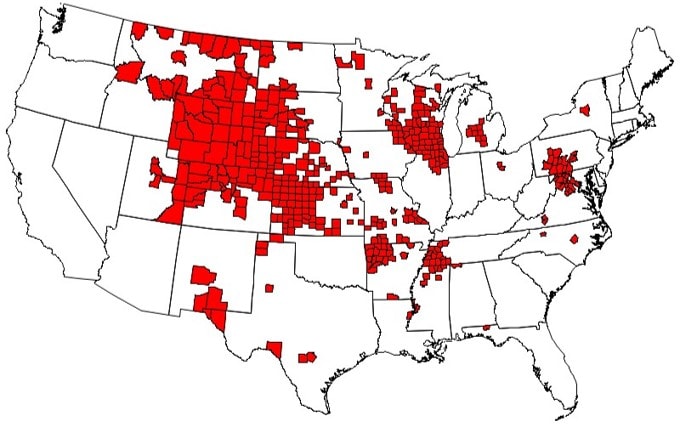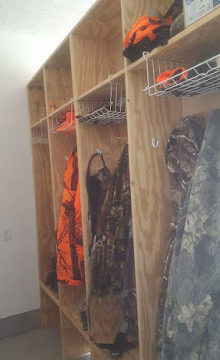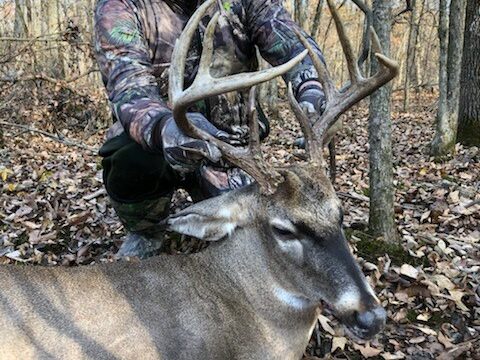
Chronic Wasting Disease (CWD) has been tabbed the number one threat to elk, moose, mule deer, and whitetail deer in the United States. If you follow hunting media, you see differing opinions on CWD. There is much debate on the overall impact CWD will have on the deer population. One fact that is not disputed, when a deer contracts CWD, it is 100% fatal.
CWD Origins
CWD is part of the classification of diseases called transmissible spongiform encephalopathies (TESs). This is the same family of diseases that impact domestic animals including mad cow disease, and scrapie. These diseases attack the brain tissue of the infected animal causing uncharacteristic weight loss, abnormal behavior and loss of body functions leading to the death of the animal.
CWD is part of the classification of diseases called transmissible spongiform encephalopathies (TESs).
The exact cause of CWD is unknown. The most common theory is that the disease is caused by a defective genetic protein called a prion. Dr. Stanley Prusnier suggested in 1982 that misfolded proteins (prions) were the cause of TSEs such as CWD. The cellular proteins that are impacted are known to be found in the central nervous and lymph systems. The prions work to convert good proteins into abnormal proteins in the animal “infecting” it with the disease.
Transmission
The spreading of the disease is thought to be through saliva, urine, feces, and parts of the brain and central nervous system. CWD is thought to be transmitted both directly animal to animal as well as indirectly through the environment. Because of this, many states with CWD infections have banned feeding and mineral sites to reduce the congregation of deer in one area to reduce the possibility of transmitting the disease. Many have also banned the use of natural deer urine in an attempt to slow the spread of the disease.
The prions survive in the environment for a long period of time and remain infectious. They are heat resistant and survive temperatures above the boiling point. They can remain on steel implements used in crop locations and knives used to process game animals. Prions are thought to survive in the soil for many years and one article from the National Library of Medicine suggests the transmission of prions through the soil is plausible.
State wildlife agencies are increasing limitations on what hunters can and cannot bring home from out of state. Because the prions are present in brain tissue and the spinal cord, many states are prohibiting transporting game with the spinal column or brain tissue intact.
While these steps may be an inconvenience to hunters, it is an attempt to protect the local herd from infection. Once a herd is infected the spread is likely and a reduction of deer numbers is probable.
Another Theory
A study by Dr. Frank Bastain from the LSU Ag Center, disputes the prion theory, claiming that a bacteria called Spiroplasma is the cause of CWD. Dr. Bastain holds that Spiroplasma, a microscopic group of bacteria without cellular walls, initiates the disease process thus generating the prions noted in earlier studies.
Dr. Bastain published his findings in The Journal of Neuropathology and Experimental Neurology where he isolated the Spiroplasma bacteria in CWD infected deer and has been able to successfully grow Spiroplasma in the laboratory. His theory is Spiroplasma are “ground zero” to the start of TSEs such as chronic wasting disease and the prions are simply markers of the disease. His experiments show that 100% of the deer injected with Spiroplasma became CWD positive.
Dr. Bastain is working towards an instant test for hunters to determine if their game is CWD positive by using blood test strips to check for the bacteria. He is further working towards using killed Spiroplasma bacteria to create a vaccine for CWD.
Skeptics of Dr. Bastain’s theory hold that animals with CWD do not present an immune response indicative of a bacterial or viral infection. In fact, they do not have an immune response at all. Further, they point to the fact that prions are nearly impossible to eradicate from the environment citing a case in Iceland where scrapie remained infectious in a sheep pasture for 16 years following sanitization attempts.
CWD Impact
According to the CDC, Chronic Wasting Disease was first discovered in captive animals in the 1960’s and in free ranging animals in 1981. Currently the disease has spread to 24 states and over 271 counties. Below is a map of the CWD infection in free range animals from the CDC website:https://www.cdc.gov/prions/cwd/occurrence.html

You can see on the map that the Western states (all animals) and Wisconsin whitetail deer population have been hit very hard with CWD. According to the Wisconsin DNR website, over the past 17 years in their Western monitoring area, the number of infected bucks has risen from 10% to 35%. The doe infection rate is up to 15% from 4%. Yearlings are similarly impacted increasing to 10% from 2% over the same time frame.
CWD is spreading and too little is know about how and why. Because of this our wildlife agencies are powerless to stop it. This is where S.382 and H.R. 837 comes into play and why their passage is vital to CWD progress.
S. 382 & H.R. 837
Legislators from Colorado, Wyoming, Alabama Pennsylvania, Mississippi, Louisiana, and Iowa have introduced legislation to the House and Senate in the form of S. 382 and H.R. 837 this year. These companion bills, titled “Chronic Wasting Disease Transmission in Cervidae Study Act“, calls for funding to be allocated to study the spread, impact, transmission and control of this fatal disease.
The Bills are aimed at the wild, captive, and farmed cervid population. The goals of the bill are to study the transmission and impact of CWD across the United States and any impact from Canadian provinces.
The bills call for studies conducted by the Academy of Sciences with oversight from the Secretary of Agriculture and Secretary of the Interior. The studies are designed to close the known scientific gaps in understanding the cause and transmission of CWD in wild and captive cervid animals. The ACT will provide unified data sharing between the Academy of Sciences, The Veterinary Services Program of the Animal and Plant Health Inspection Service, US Geological Survey. Another outcome will be proving best practices to state and federal agencies aimed at controlling CWD on a national level.
Take Action
The time to act is now. CWD needs to be understood and collectively controlled across the United States. No matter if you subscribe to the prion theory or the bacteria theory, we still need to understand more about CWD. The two undisputable facts that we have are it is spreading and it is fatal.
Follow the links below to find your representatives in the House and Senate and make your voice heard on S. 382 and H.R 837.




